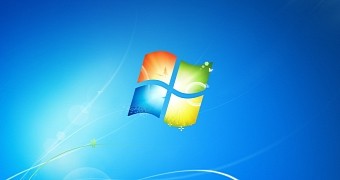In addition to Windows 10 cumulative updates, this month’s Patch Tuesday also brought a new monthly rollup for Windows 7, the 2009 operating system that has previously been discontinued in January this year.
In other words, the new monthly rollup, which comes as KB4577051, is available exclusively for devices that are configured to receive custom security updates. So consumers still running Windows 7 on their home computers aren’t getting any updates, which means all the vulnerabilities that are resolved this month would just be left unpatched on their PCs.
This is the reason Microsoft insists so hard for the upgrade to Windows 10 on these devices, albeit the move to Windows 8.1 is also available should Windows 7 users not like the new modern experience on the desktop.
The new monthly rollup is KB4577051, and it updates the time zone information for Yukon, Canada, according to the official changelog.
It obviously brings security patches for several Windows components, including the kernel, Windows Media, Windows peripherals, and the Windows filesystem.
There’s also an essential patch for a vulnerability affecting user proxies and HTTP-based intranet servers.
“After you install this update, HTTP-based intranet servers cannot leverage a user proxy to detect updates by default. Scans that use these servers will fail if the clients do not have a configured system proxy. If you must leverage a user proxy, you must configure the behavior by using the Windows Update policy “Allow user proxy to be used as a fallback if detection using system proxy fails.” This change does not affect customers who secure their Windows Server Update Services (WSUS) servers that use the Transport Layer Security (TLS) or Secure Sockets Layer (SSL) protocols,” Microsoft says.
If you try to install this update and you get the following error:
“Failure to configure Windows updates. Reverting Changes. Do not turn off your computer.”
Then it’s because your computer isn’t configured to receive extended security updates. So unless your company is paying for updates to keep Windows 7 patched these days, there’s no way to install the new updates on your computer.
To receive updates that are released as part of the ESU program, your computer must be running KB4474419, the SHA-2 update that was released on September 23, 2019, or a newer version. Then, on a device powered by Windows 7 SP1, the KB4490628 servicing stack update is required too.
“A so-called Extended Security Updates Licensing Preparation Package is also required on your device, and then users must download the ESU MAK add-on key from the VLSC portal
After you successfully complete this procedure, you can continue to download the monthly updates via the usual channels of Windows Update, WSUS and Microsoft Update Catalog. You can continue to deploy the updates using your preferred update management solution,” Microsoft explains.
Despite Windows 7 no longer receiving updates, this doesn’t necessarily mean everybody is ready to abandon the operating system. Third-party statistics have shown that more than 20 percent of the desktop computers out there are still running Windows 7, despite the security risks that are obviously caused by an unsupported platform.
Most users who still don’t want to abandon Windows 7 refuse the upgrade to Windows 10 because of the modern approach this operating system uses. The introduction of a Microsoft Store, Cortana, and the Action Center has convinced many to just stick with Windows 7 for as long as possible, albeit as said earlier, this obviously isn’t recommended given the security risks of running an operating system that no longer receives security patches.

 14 DAY TRIAL //
14 DAY TRIAL //